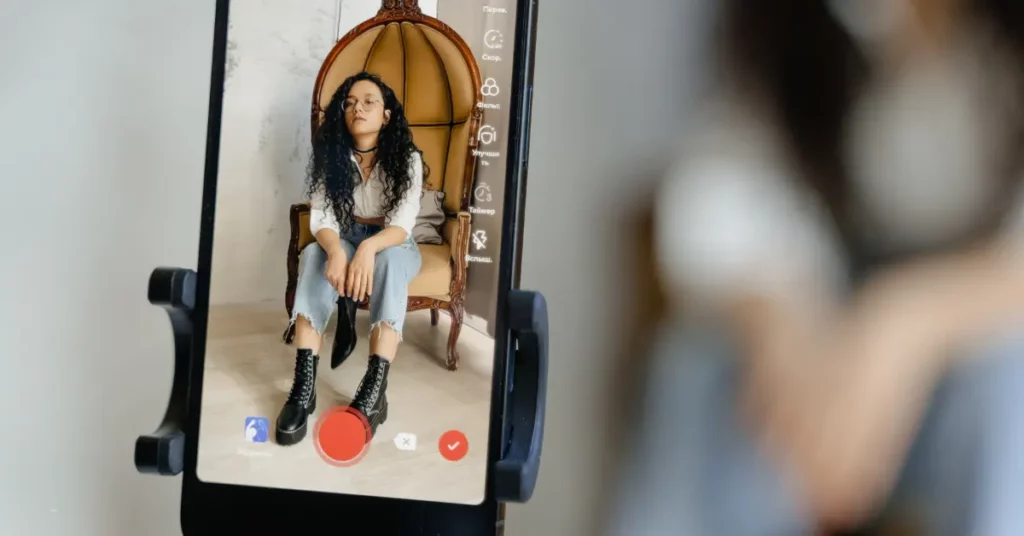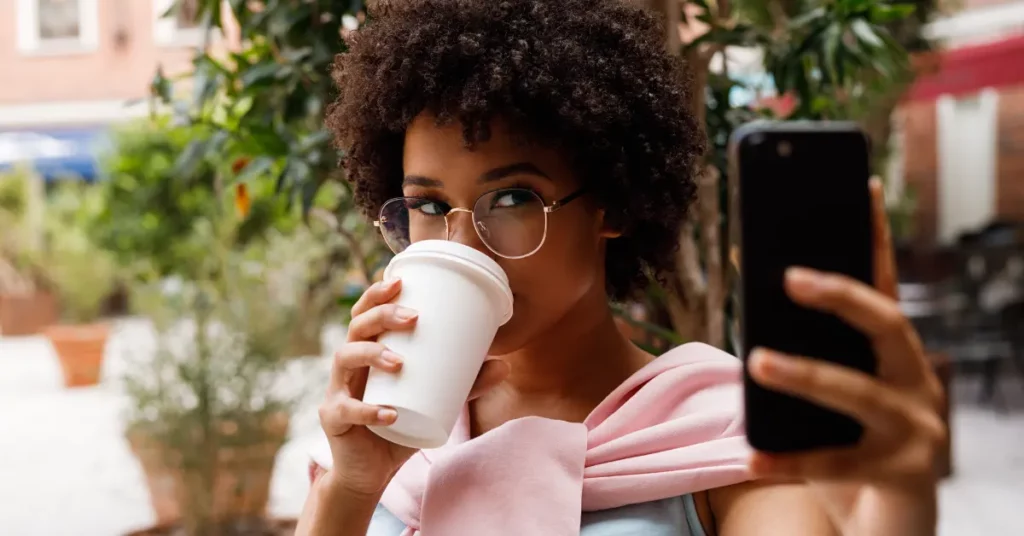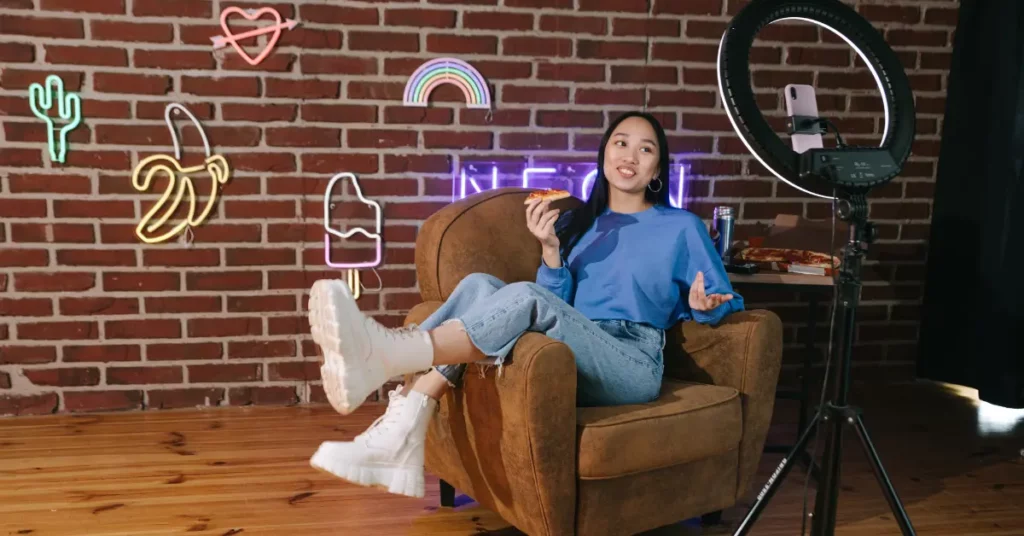In the vibrant world of fashion, social media has emerged as a crucial platform for marketing. With its vast reach and dynamic nature, social media offers fashion brands a unique opportunity to connect with a global audience. This blog post delves into the essentials of fashion marketing trends on social media, covering various strategies from leveraging influencers to using analytics for refining marketing approaches. We’ll explore how fashion brands can capitalize on these platforms to enhance their visibility, engage with audiences, and drive trends.
Fashion and social media are interconnected, with trends often emerging and evolving on these platforms. Social media not only reflects current fashion trends but also plays a pivotal role in creating them. Brands can leverage this influence by staying up-to-date on trending styles and themes and incorporating them into their marketing strategies. Understanding this dynamic is key to creating content that resonates with the audience and keeps the brand relevant in the ever-changing fashion landscape.

Visual appeal is at the heart of fashion, and nowhere is this more critical than on social media. Platforms like Instagram and Pinterest are highly visual, making them ideal for showcasing fashion products and styles. The key to success on these platforms is creating content that is not only visually stunning but also aligns with the brand’s aesthetic and values. High-quality images, engaging videos, and creative presentations can capture the audience’s attention and differentiate the brand in a crowded digital space.
Leveraging Influencers and Fashion Bloggers
In the realm of fashion marketing on social media, influencers, and bloggers play an indispensable role. They are the trendsetters and style ambassadors who bring a brand’s vision to life through their platforms. Collaborating with influencers and fashion bloggers can significantly amplify brand reach. Influencers have the unique ability to connect with their followers on a personal level, making their endorsements more impactful. When a fashion brand partners with the right influencers, it not only taps into its large and engaged audience but also leverages the influencers’ creativity and authenticity. These collaborations can take various forms, from sponsored posts and product reviews to collaborative collections, each providing a new avenue for brands to connect with potential customers.
Influencers also play a crucial role in enhancing brand credibility. Their followers often see them as trusted sources of fashion advice and inspiration. When an influencer genuinely endorses a product, it lends credibility to the brand. This trust is especially important in the fashion industry, where style and quality are paramount. Therefore, influencer endorsements can be a powerful tool in convincing skeptical consumers and building a loyal customer base.
Selecting the right influencers is a critical aspect of fashion marketing. It’s not just about the number of followers; it’s about finding influencers whose style, values, and audience align with the brand’s identity. Choosing the right influencers for your fashion brand involves thorough research and understanding of the influencer’s impact in their niche. The ideal collaboration is one where the influencer’s aesthetic and audience demographics match the brand’s target market, ensuring that the partnership is authentic and the message resonates with the intended audience.
The Art of Storytelling in Fashion Marketing
Storytelling in fashion social media is about creating a narrative that goes beyond the product itself. It’s about weaving a story that involves the brand’s values, the inspiration behind collections, and the lifestyle associated with the brand. By crafting these narratives, brands can give their products a unique identity and a richer context that resonates with their audience. Effective storytelling can transform a simple item of clothing into a symbol of a particular lifestyle or set of values, making it more appealing to potential customers.
Brands should strive to create content that resonates on an emotional level with their audience. This can be achieved through storytelling that reflects the audience’s aspirations, challenges, or experiences. For instance, a brand can share stories of how their products are crafted, the people behind them, or how they contribute to a sustainable future. These stories can create a sense of belonging and affinity between the brand and its audience, fostering loyalty and engagement.
In the visually-driven realm of social media, integrating storytelling with visual content is crucial. This involves using high-quality images and videos that complement the narrative and bring the story to life. Brands can use a mix of product shots, behind-the-scenes content, and user-generated content to tell their story. By combining engaging visuals with compelling narratives, fashion brands can create a holistic and immersive experience that captivates and retains the attention of their audience.,
Strategic Use of Hashtags and Campaigns
Hashtags are more than just social media accessories; they are powerful tools for increasing visibility and engagement. When used effectively, hashtags can help fashion brands reach a wider audience, attract potential customers, and engage in trends relevant to their niche. By researching and using popular, brand-specific, and trend-based hashtags, brands can ensure their content appears in the feeds of users interested in fashion, thereby increasing their chances of engagement and brand exposure.
Effective social media campaigns are essential for captivating an audience and driving brand objectives. Campaigns can range from product launches and seasonal promotions to awareness drives for sustainability in fashion. The key to success lies in creating a campaign that is not only visually appealing but also tells a story that aligns with the brand’s values and resonates with the target audience. Clear goals, creative content, and a well-planned execution strategy are the cornerstones of successful social media campaigns.
For fashion brands, developing a tailored hashtag strategy is crucial. It helps increase visibility, drive engagement, and connect with specific segments of the market effectively. Here’s how to optimize a hashtag strategy for maximum impact:
- Identify Popular Hashtags: Research and select hashtags that are currently trending within the fashion industry and relevant to the brand’s identity. These hashtags are often broad and highly searchable, capturing a wide audience. They should align with the brand’s values and the aesthetic of its social media content to ensure consistency and relevance. Utilizing popular hashtags effectively can increase the likelihood of discovery by new followers and potential customers.
- Utilize Niche Hashtags: Incorporate hashtags that are more specific to particular interests, styles, or subcultures within the broader fashion market. These niche hashtags target a more defined, engaged audience and are crucial for reaching potential customers who are likely to be interested in the specific offerings of the brand. For example, a brand focusing on sustainable fashion might use hashtags like #EcoFashion or #SustainableStyle to attract an audience passionate about environmental issues.
- Create Brand-Specific Hashtags: Develop unique hashtags that are tailor-made for the brand. These can be used to cultivate a community around the brand and encourage the sharing of user-generated content. Brand-specific hashtags can be the brand’s name, taglines, or campaign names. They help in tracking conversations about the brand, fostering a sense of community among users, and amplifying the reach through content created by the customers themselves. This not only enhances engagement but also provides authentic content that can be leveraged in marketing campaigns.
Implementing these strategies ensures that a fashion brand’s social media content does not just reach a wide audience but engages them deeply, creating meaningful interactions that can convert followers into loyal customers. A strong hashtag strategy taps into the power of social networks to significantly boost a brand’s online presence and influence.

Tailoring Content for Different Social Media Platforms
Fashion marketing’s effectiveness on social media is significantly enhanced when content is tailored to suit the specificities of each platform. Different platforms cater to varied audiences and favor different types of content, making it essential for fashion brands to strategize accordingly.
Instagram, known for its visual-centric approach, is perfect for fashion brands to showcase their aesthetic. Utilizing Instagram Stories for behind-the-scenes content is a brilliant way to engage the audience. These stories can offer a glimpse into the design process, photoshoots, or the day-to-day workings of a fashion brand, making the audience feel more connected to the brand. The ephemeral nature of stories makes them ideal for sharing exclusive content, fostering a sense of immediacy and exclusivity among followers.
Facebook, with its diverse user base, provides a unique opportunity for community building. Fashion brands can leverage Facebook to create a community around their brand by sharing longer-form content, engaging with user comments, and creating groups where fans can interact with each other. Facebook’s algorithm favors content that generates conversation, making it an ideal platform for building a loyal brand community through interactive posts and discussions.
Pinterest is an underutilized but powerful tool for fashion marketing. Known as a go-to platform for inspiration, using Pinterest for inspiration boards allows fashion brands to showcase their collections, mood boards, and style guides. This platform is perfect for driving traffic to a brand’s website, as each pin can be linked back to the source. By curating visually appealing boards, fashion brands can inspire and engage users, effectively driving brand awareness and interest.
Engaging with the Fashion Audience
Engagement is a critical metric in the realm of fashion marketing on social media. It’s not just about showcasing products; it’s about fostering a community and building relationships with the audience. Creating interactive content is key to fostering community in fashion marketing. This can include:
- Live Q&A Sessions: Host live Q&A sessions on platforms like Instagram or Facebook to directly interact with your followers. This direct interaction makes followers feel valued and allows them to get their questions answered in real time. It also provides a platform for the brand to clarify product details, share styling tips, and announce upcoming launches or events, enhancing transparency and trust.
- Interactive Polls and Surveys: Utilize polls and surveys on social media to gather feedback and understand the preferences of your audience. This not only aids in tailoring future products and campaigns to better meet customer desires but also makes followers feel like they have a voice in the brand’s decision-making process. Polls can be about new designs, color options, or even broader content preferences, making engagement fun and informative.
- Challenges or Contests: Create engaging challenges or contests that encourage followers to participate by creating and sharing content related to the brand. This could involve styling a particular item in various ways, creating artwork inspired by the brand, or using a specific hashtag. Contests are excellent for generating user-generated content that can be showcased on the brand’s platforms, further driving engagement and reach.
- Behind-the-Scenes Glimpses: Use features like Instagram Stories or Snapchat to offer behind-the-scenes looks at the brand’s operations, from photoshoots to the design process. This fosters a sense of exclusivity and connection, as followers get to see aspects of the brand they typically wouldn’t. It humanizes the brand and creates a narrative that followers can feel a part of.
Such interactive content not only enhances engagement but also gives the audience a sense of belonging and a voice within the brand community. It’s about transforming followers into active participants, creating a two-way conversation that can provide valuable insights and build a stronger connection with the brand. Using direct messages effectively can significantly enhance audience engagement in fashion marketing. Direct messages, on the other hand, offer a more personal way to connect with followers, answer their queries, and provide tailored advice or recommendations.
Consistent and meaningful engagement is essential for building loyalty among followers. By actively engaging with their audience, fashion brands can create a loyal community of followers who are more likely to advocate for the brand. Loyal followers can become brand ambassadors in their own right, sharing their love for the brand with their networks, thus amplifying the brand’s reach and influence.
Analyzing and Adjusting Strategies with Analytics Tools
The use of social media analytics for fashion brands is crucial in understanding the effectiveness of marketing strategies. These tools provide valuable insights into various metrics like engagement rates, follower growth, and content reach. By closely monitoring these metrics, fashion brands can measure the performance of their social media activities, identify successful content, and understand audience preferences. This analysis is essential for making informed decisions and optimizing social media strategies for better performance.
Analytics not only provide a snapshot of current performance but also offer guidance for future strategies. Refining marketing strategies based on analytics involves understanding what content resonates with the audience, the best times to post, and which platforms yield the highest engagement. This data-driven approach allows fashion brands to tailor their content and tactics to more effectively reach and engage their target audience, enhancing the overall impact of their marketing efforts.
Effective fashion marketing on social media goes beyond general content creation; it requires targeted efforts based on audience insights. By utilizing data for targeted marketing efforts, brands can create campaigns that speak directly to the interests and needs of their audience. This can include personalized product recommendations, targeted promotions, and content that reflects the latest trends and preferences of their audience. Leveraging data in this way ensures that marketing efforts are not only more relevant and engaging but also more likely to convert followers into customers.
Best Practices for Fashion Marketing on Social Media
It’s important to consolidate the key strategies and practices that can elevate a brand’s presence and effectiveness in this dynamic digital landscape. A consistent brand presence on social media is crucial for fashion brands. Consistency in visual aesthetics, tone of voice, and messaging helps in building brand recognition and loyalty. Brands need to stay true to their identity while also evolving with trends. Authenticity resonates with audiences and maintains its uniqueness while consistently engaging with its audience can create a strong and loyal following.

In the fast-paced world of social media, staying updated with the latest trends and adapting to social media algorithms is vital for fashion brands. The digital landscape is continually changing, with new features, platforms, and user behaviors emerging regularly. Brands need to be flexible and quick to adapt their strategies to these changes. Understanding and leveraging new features like AR filters on Instagram or shopping features on Pinterest can keep a brand ahead of the curve.
Mastering fashion marketing on social media is about more than just showcasing products—it’s about crafting compelling narratives, creating visually stunning content, and engaging meaningfully with the audience. By leveraging influencers, optimizing hashtag usage, and tailoring content to specific platforms, fashion brands can significantly amplify their reach and resonance. Ultimately, staying attuned to the evolving digital landscape and employing strategic, data-driven approaches will ensure that brands not only capture attention but also cultivate loyalty and drive trends, setting the stage for lasting success in the dynamic world of fashion.
